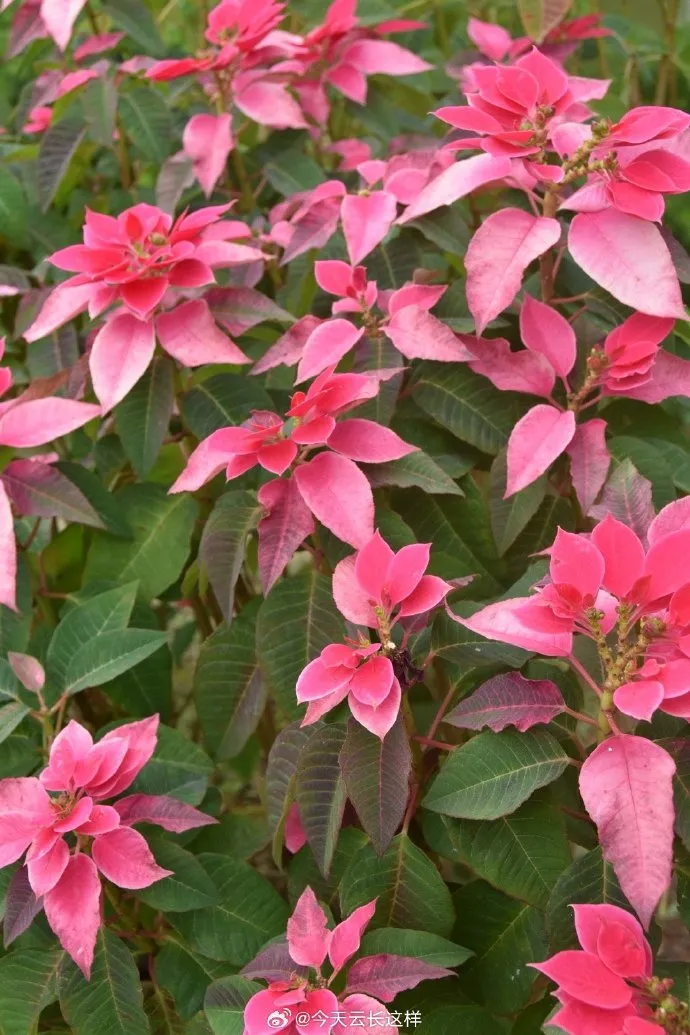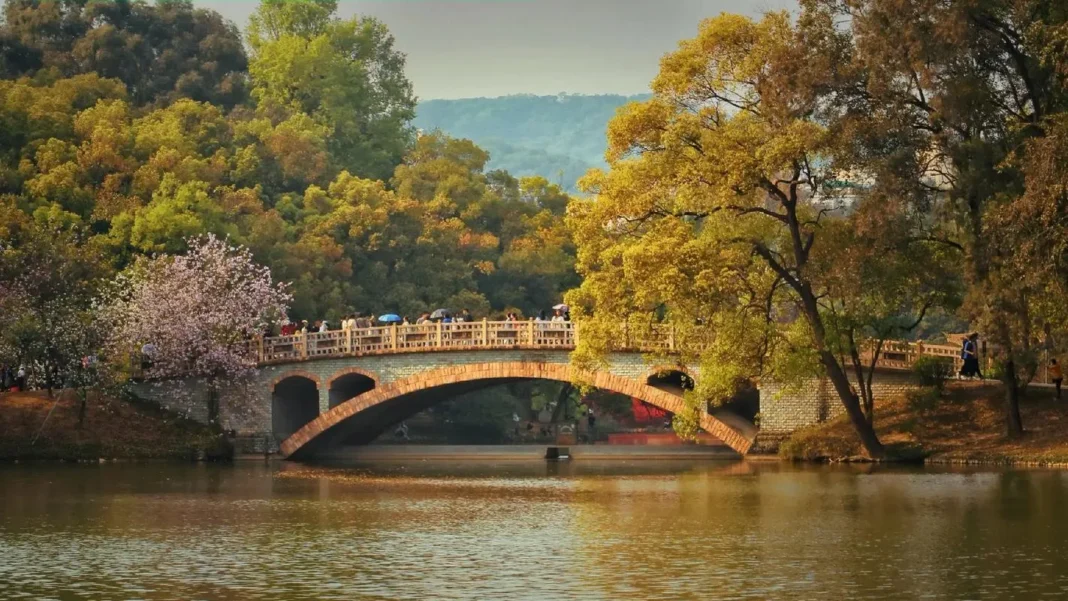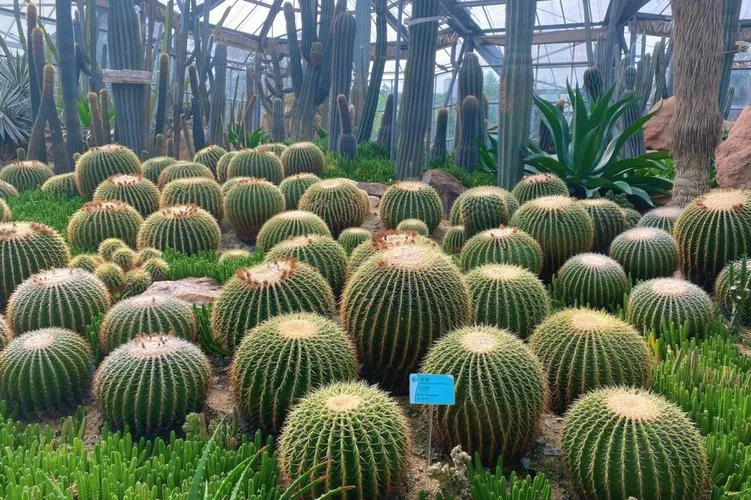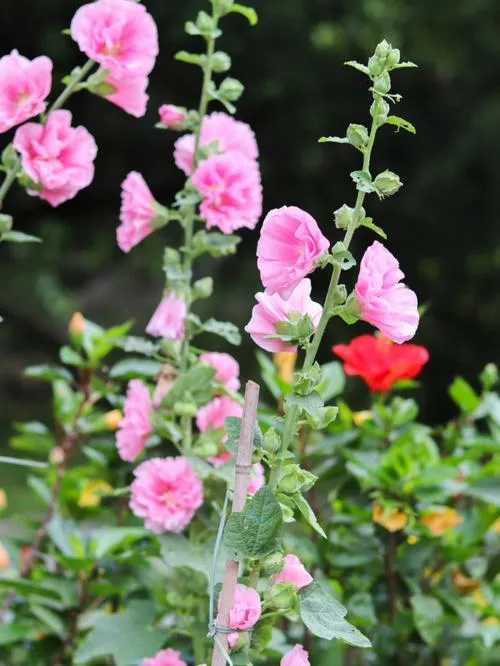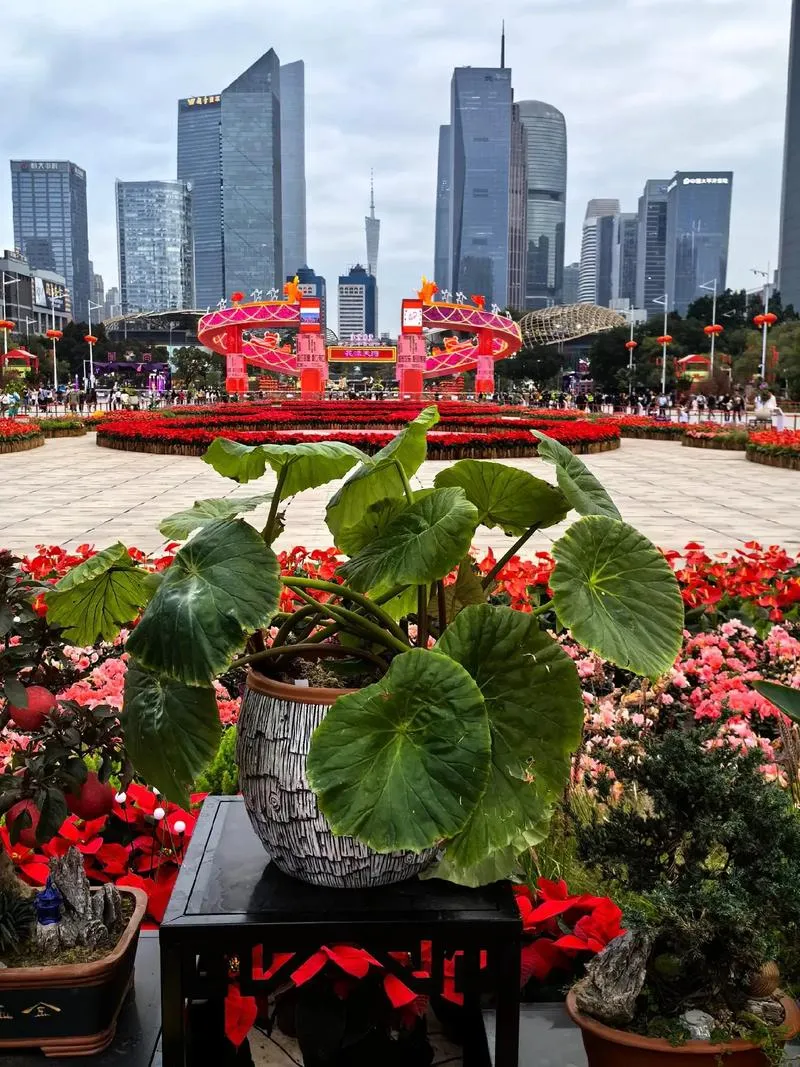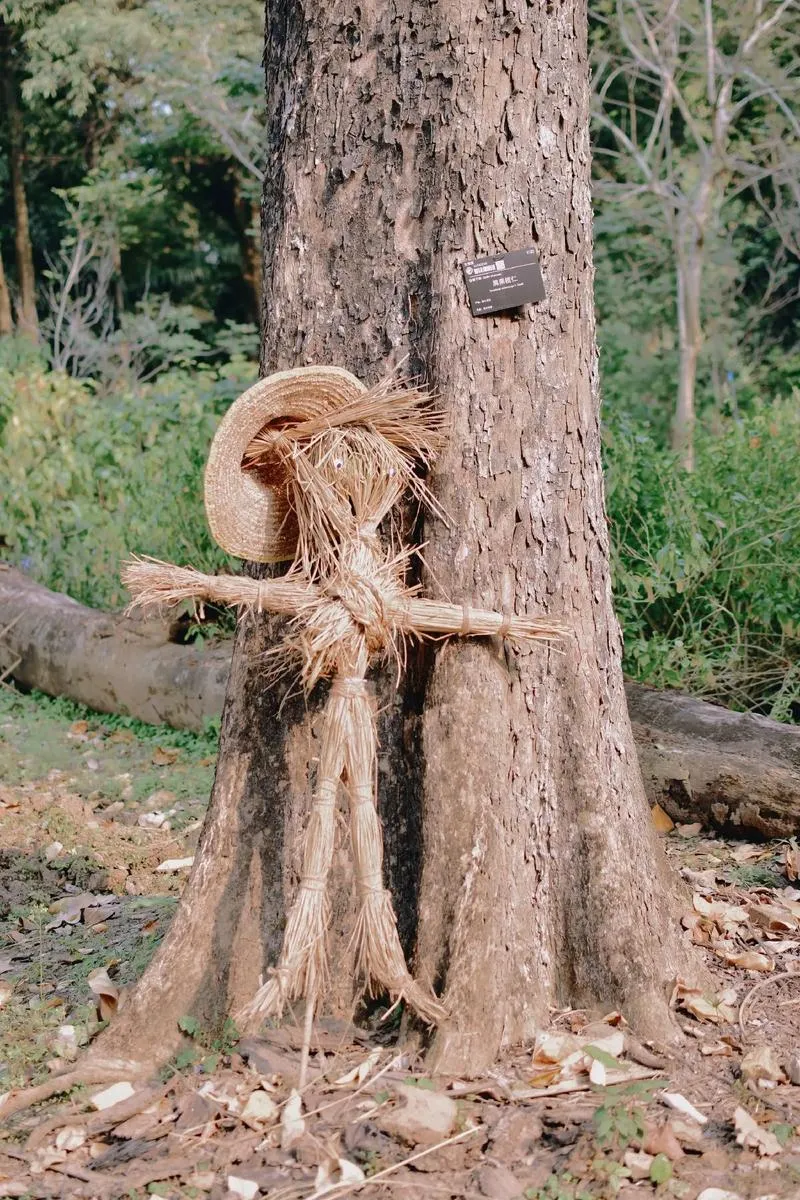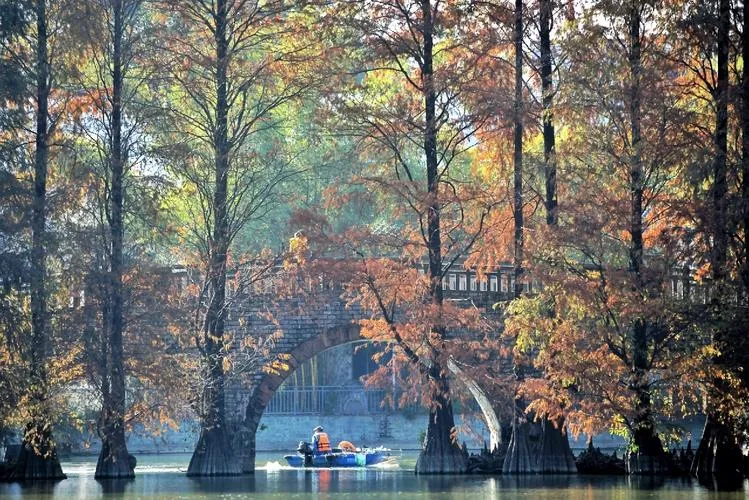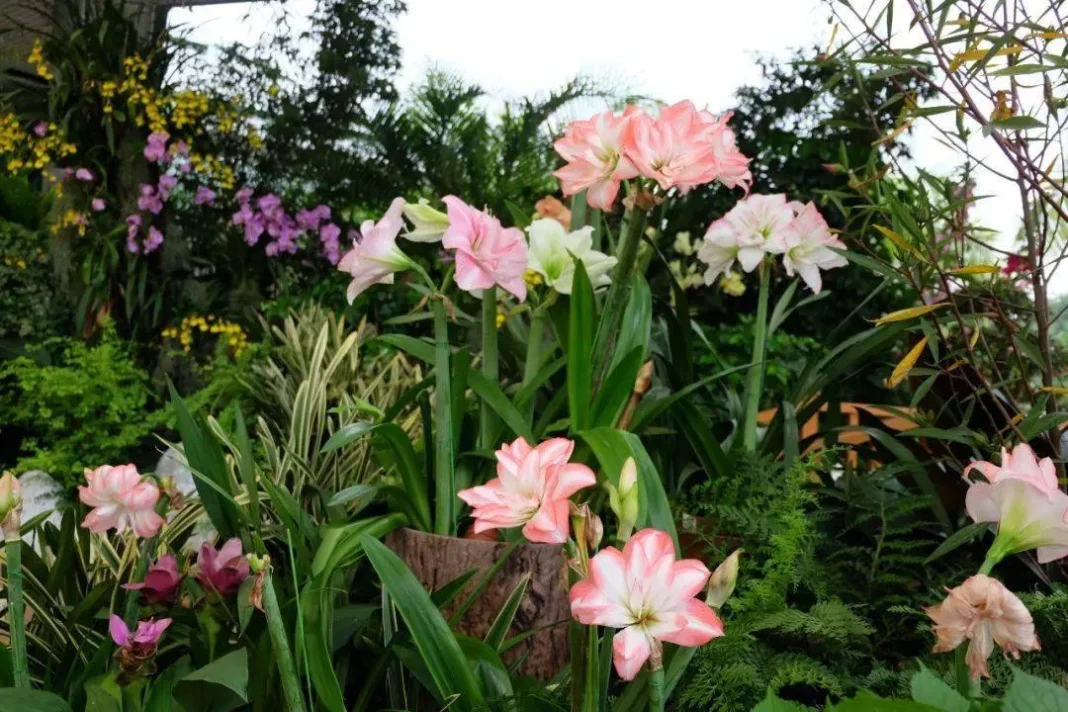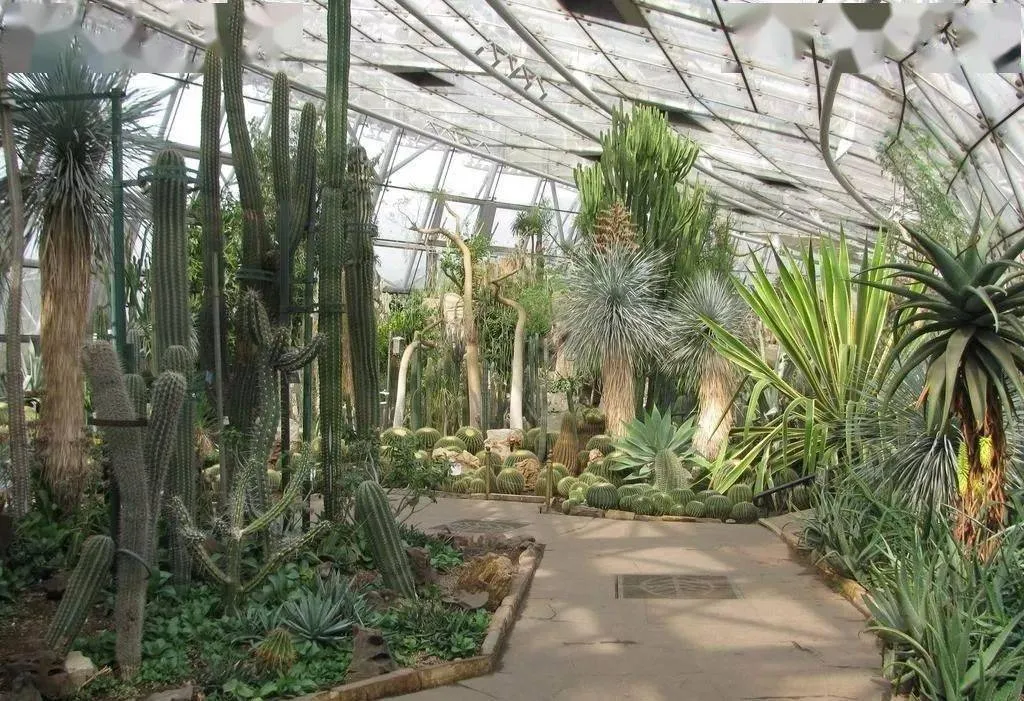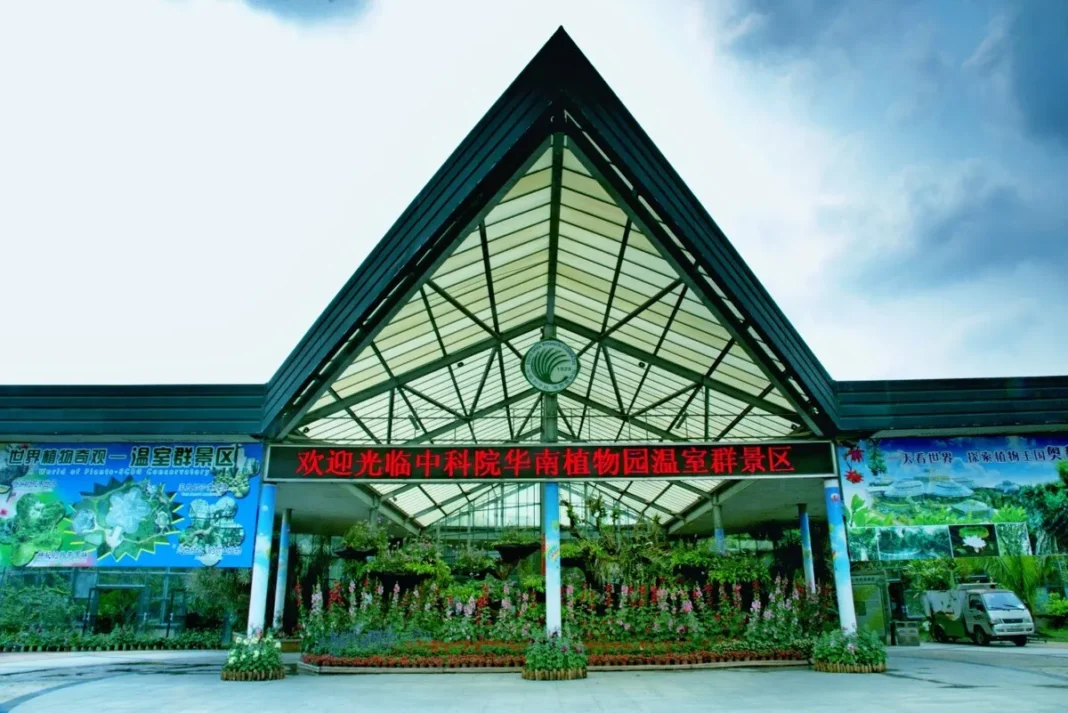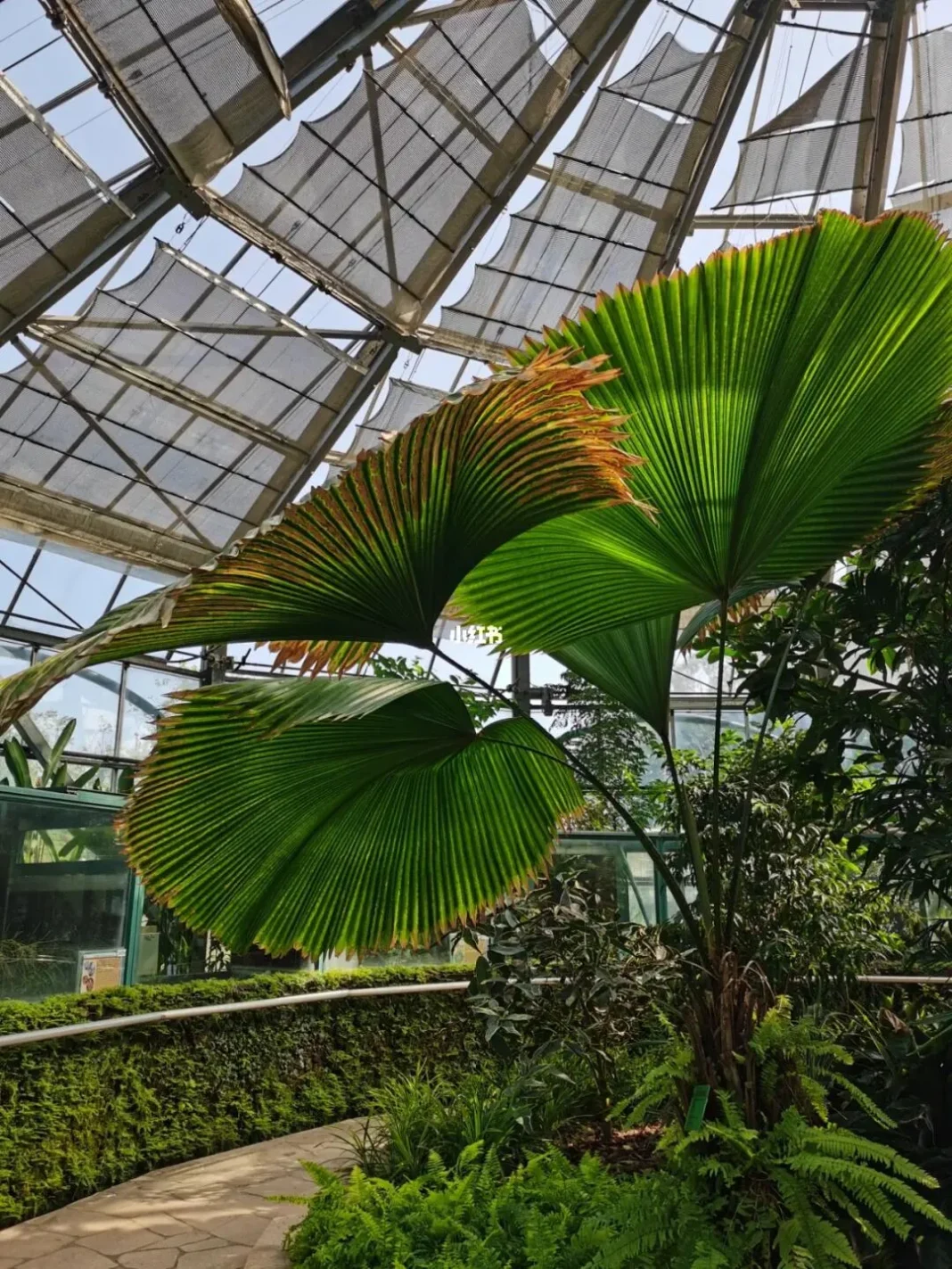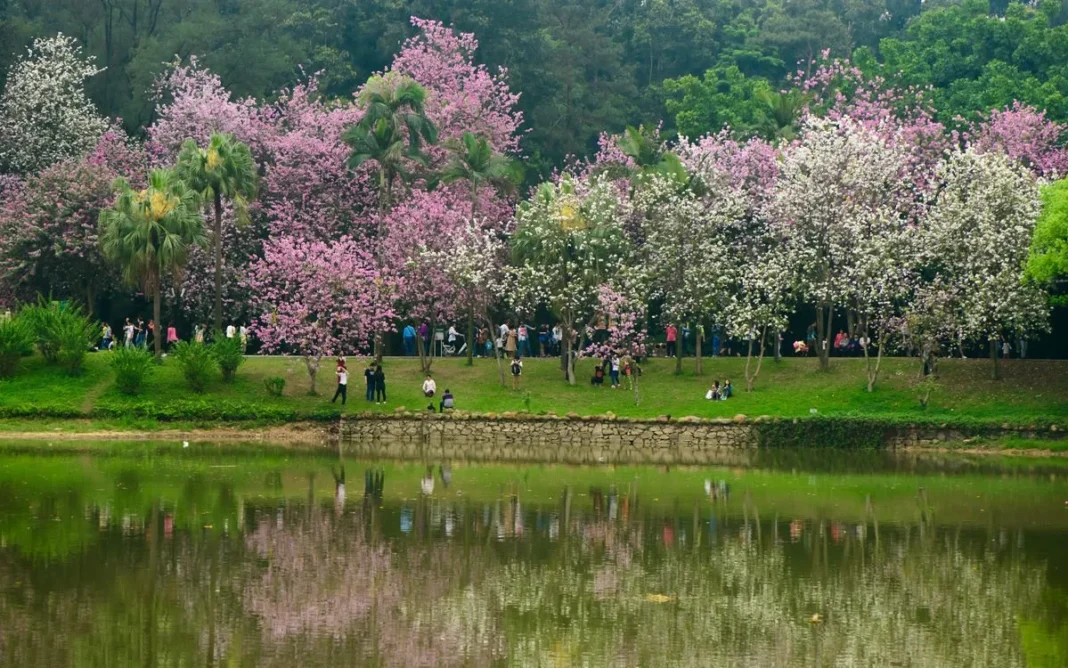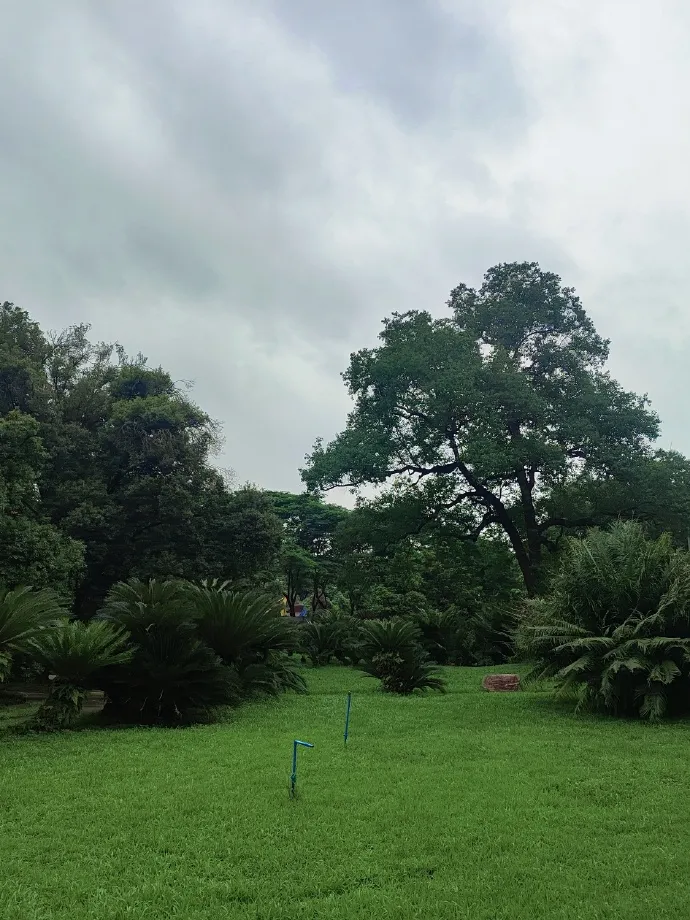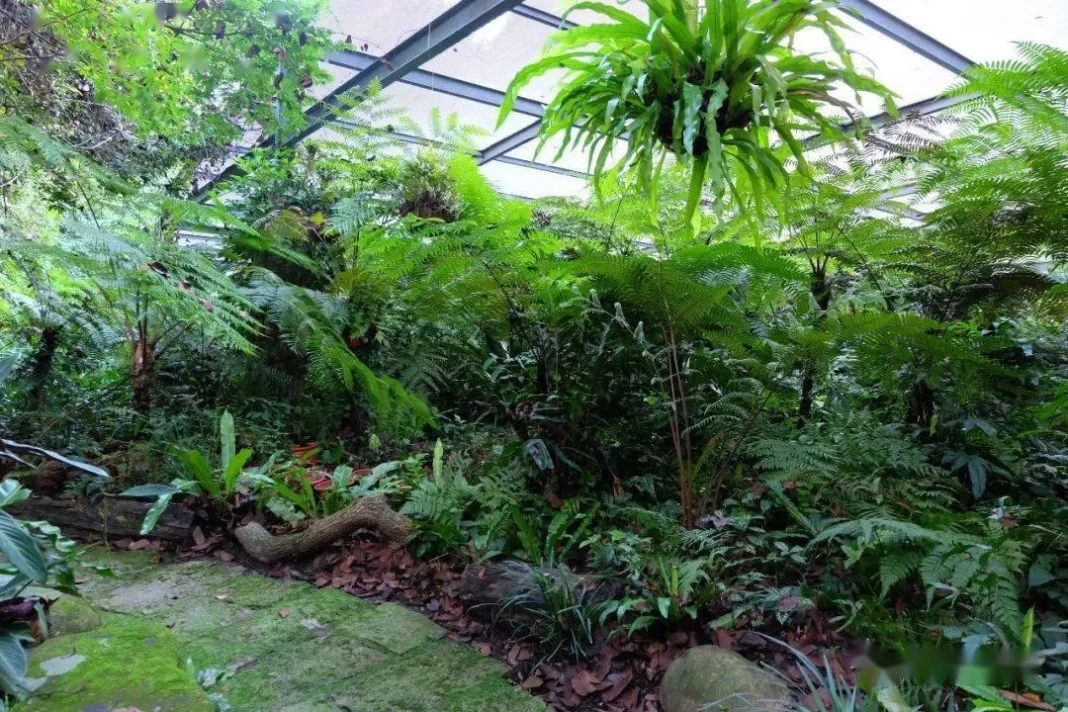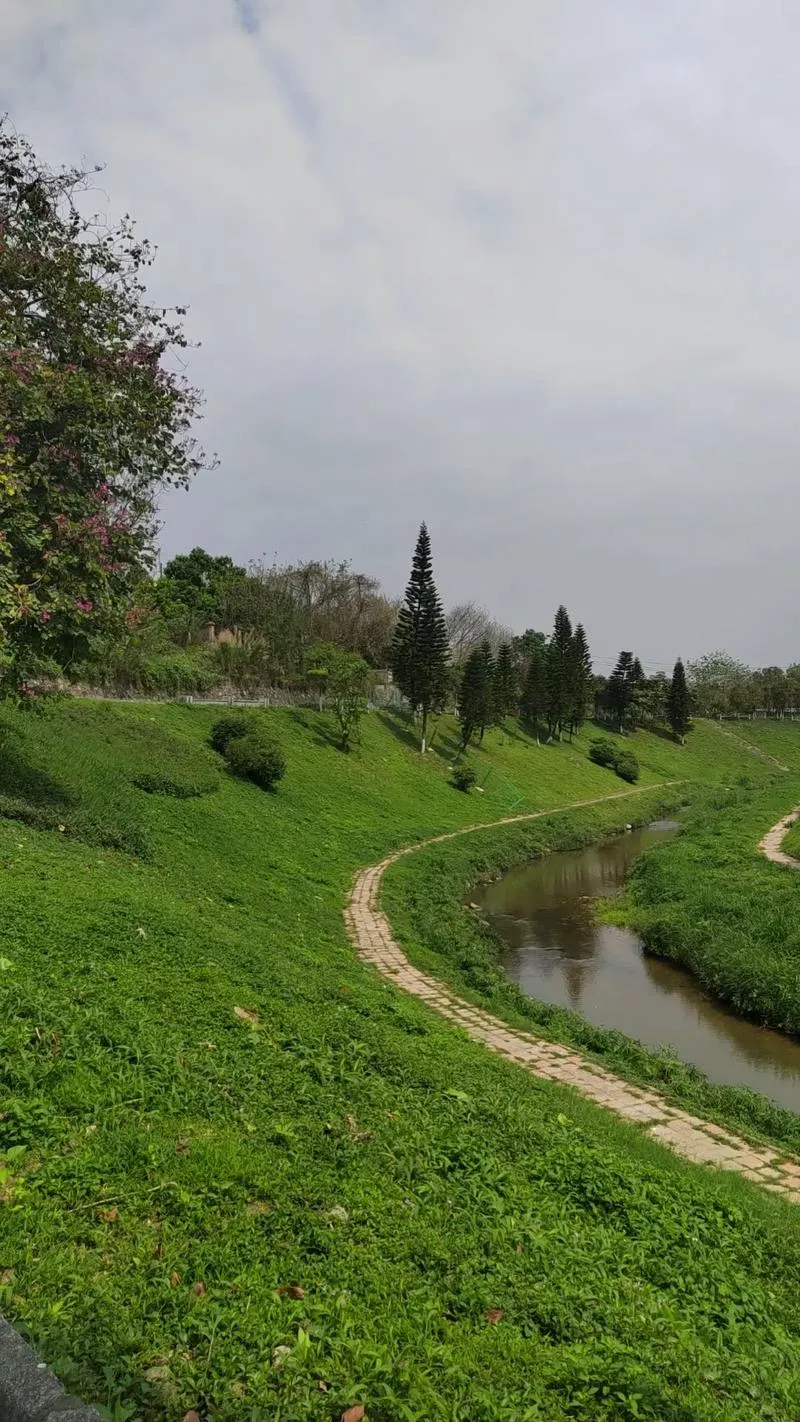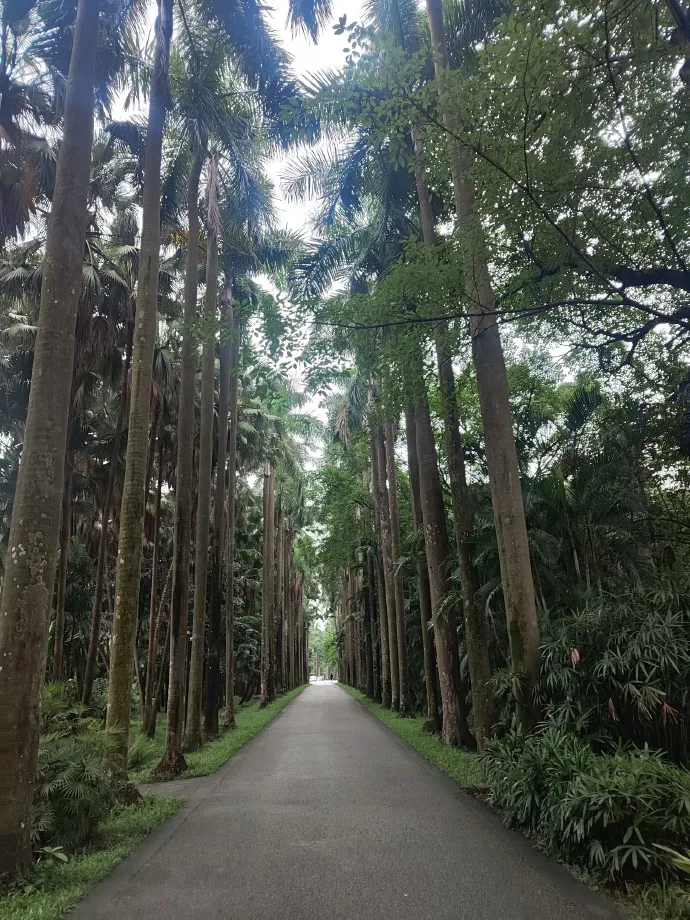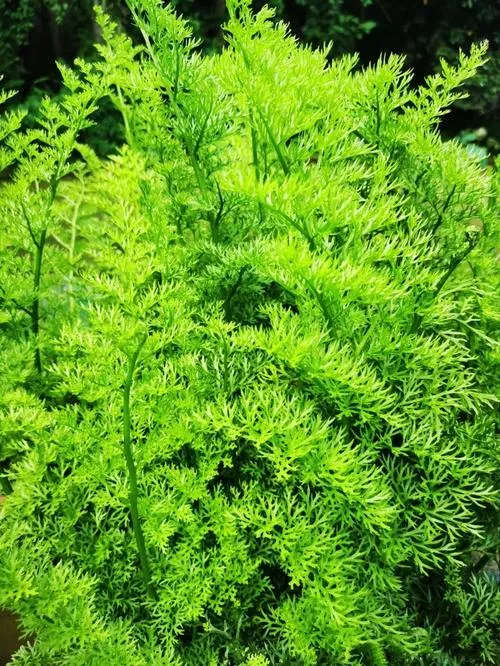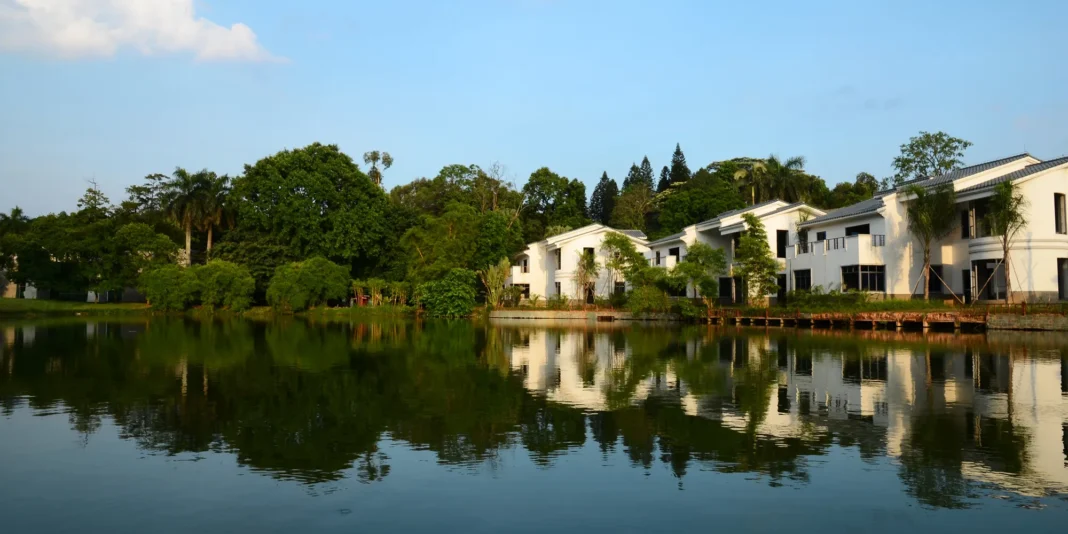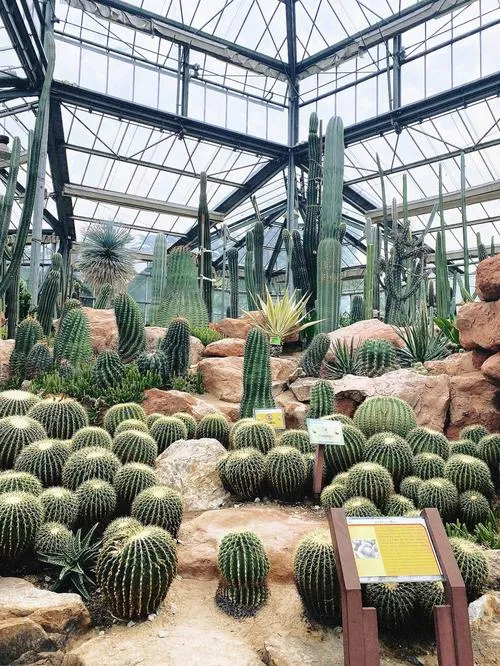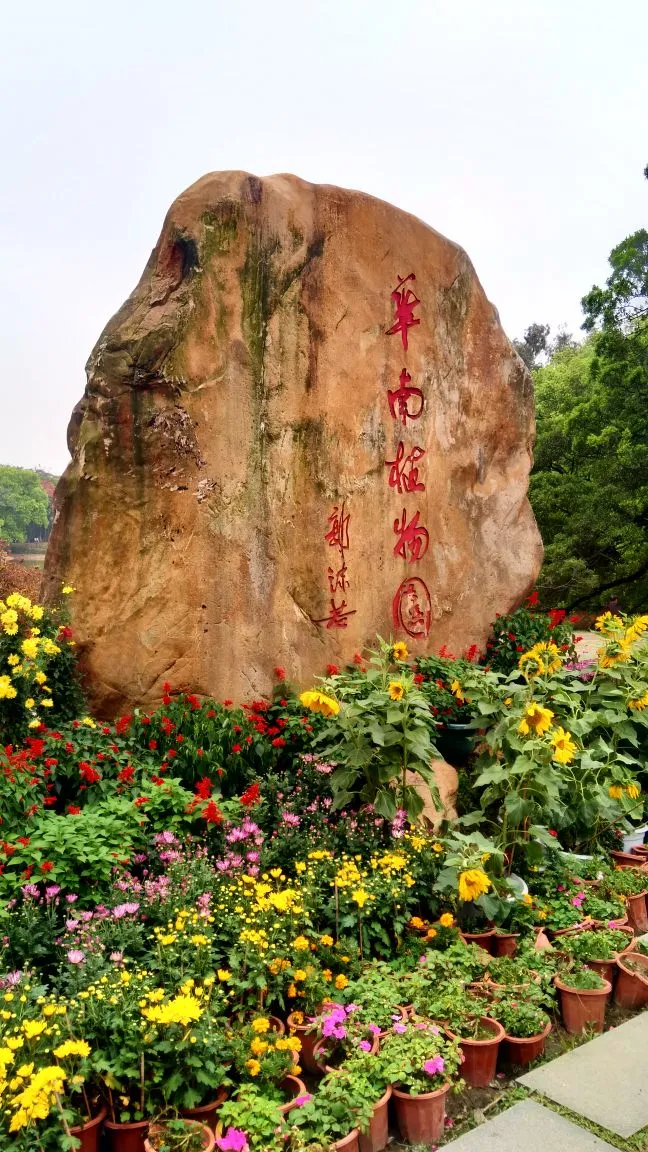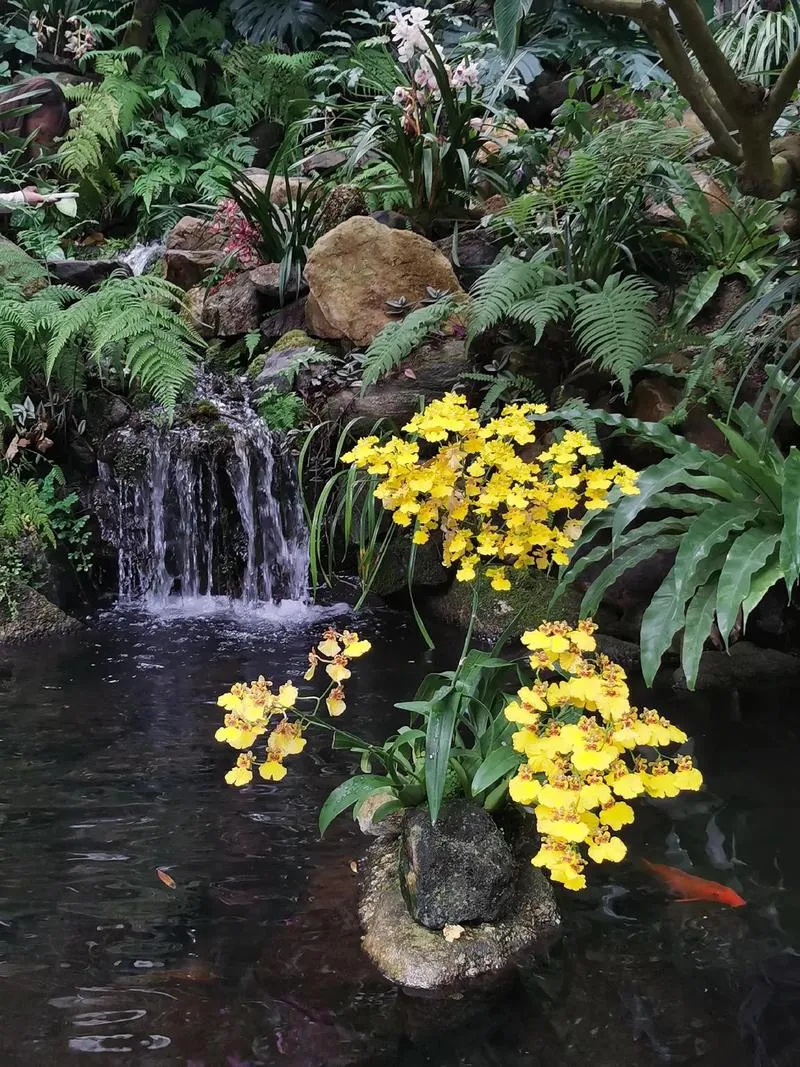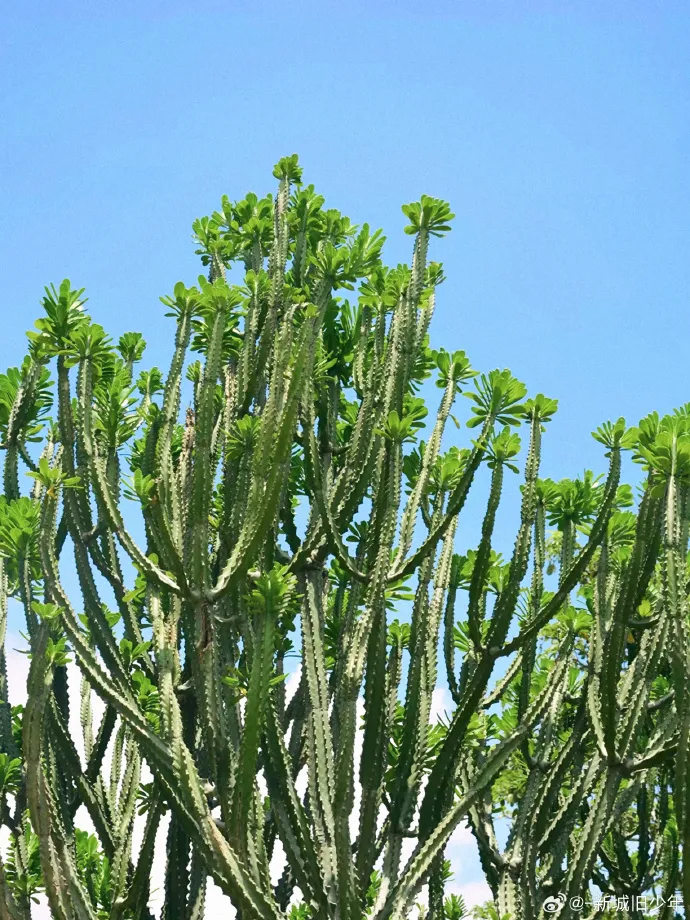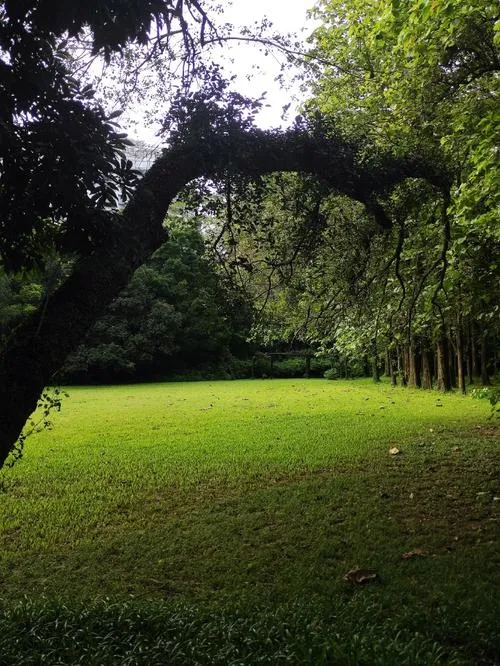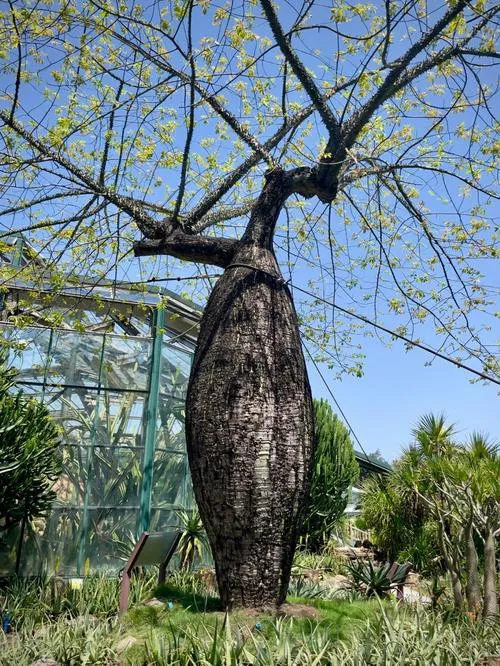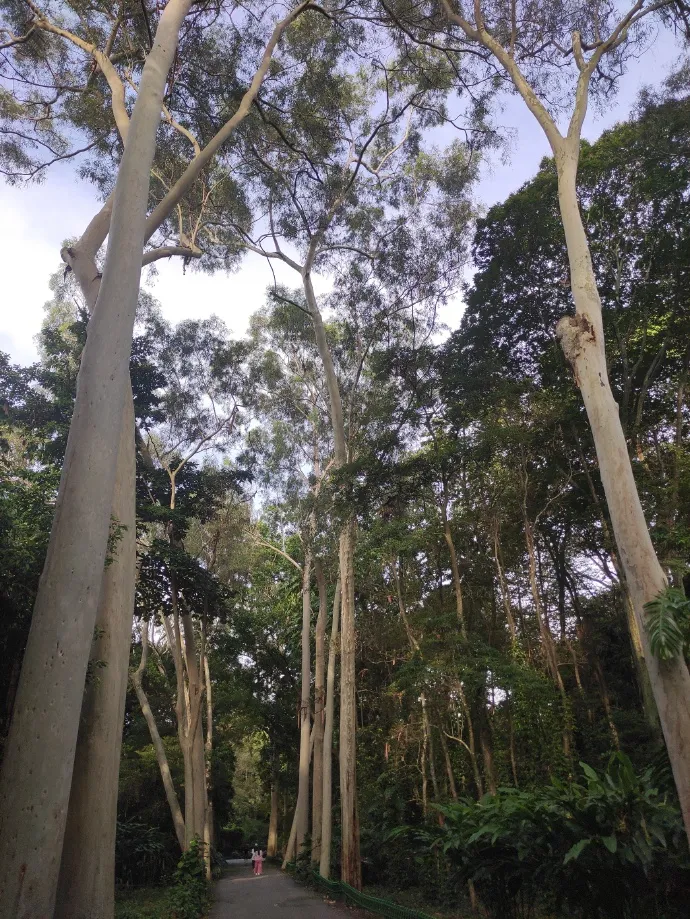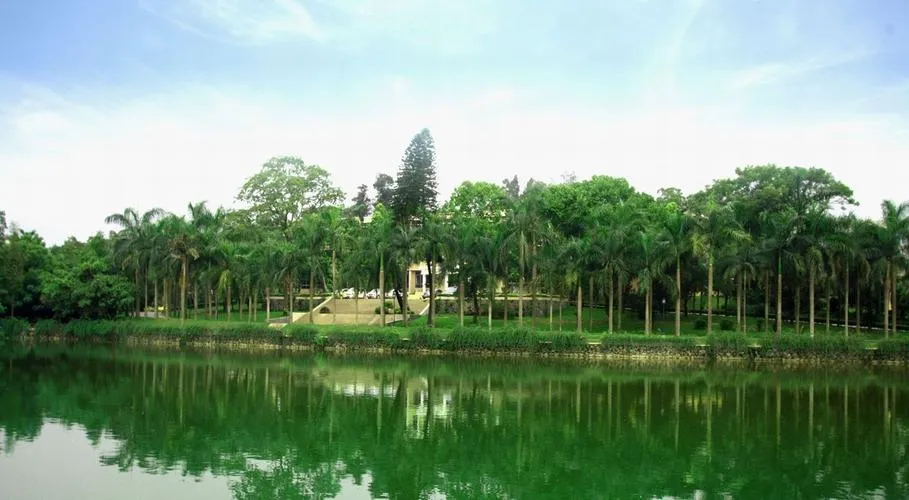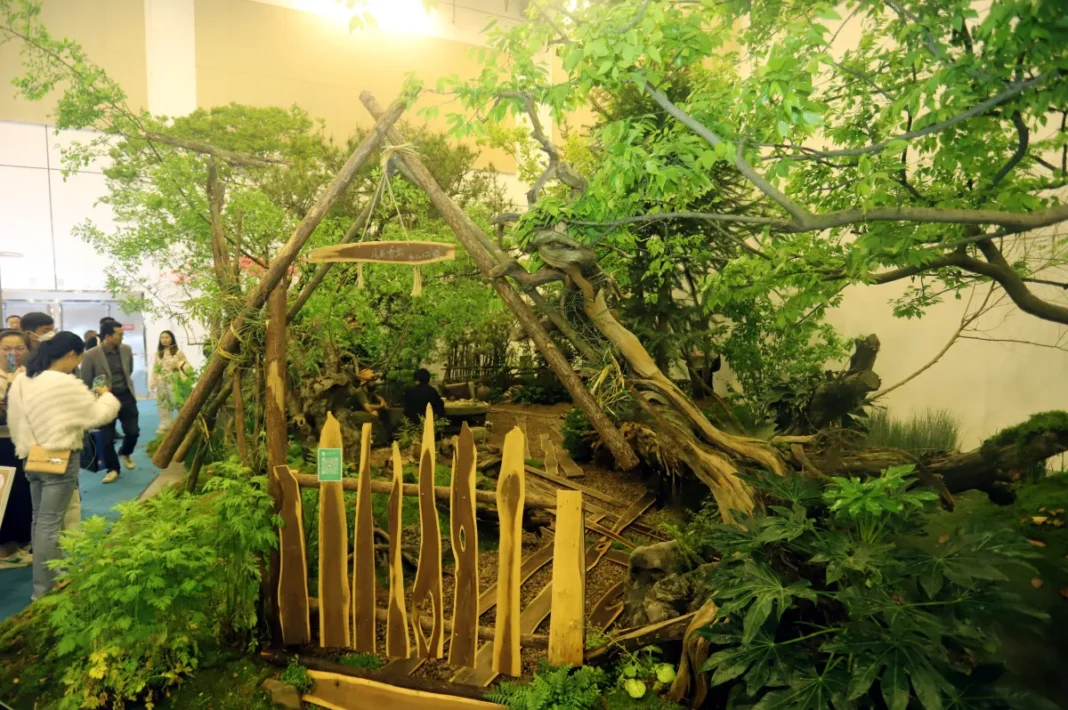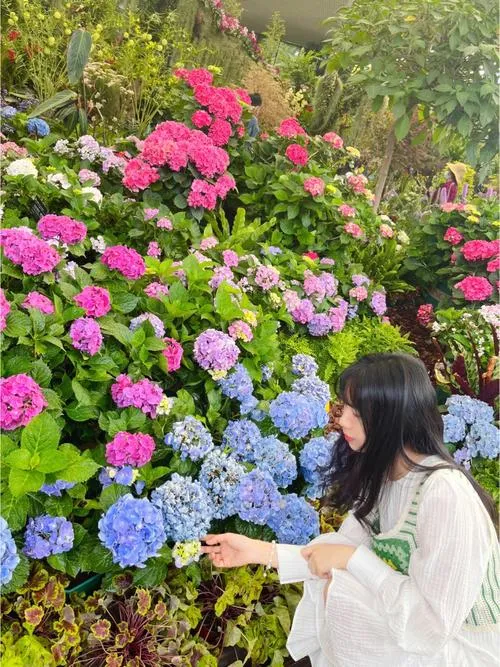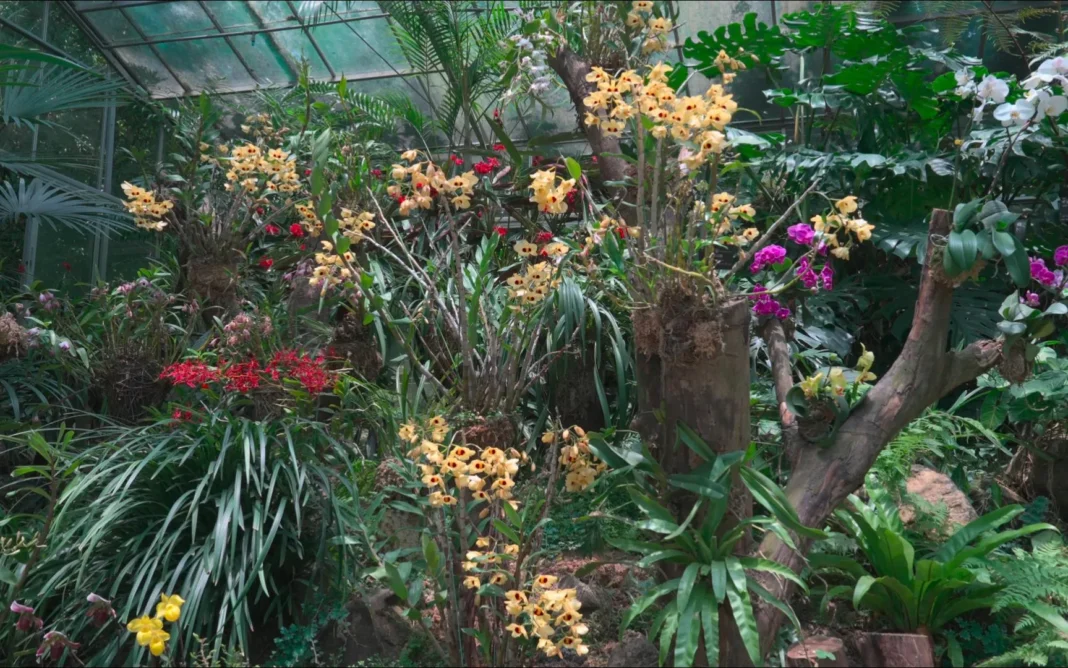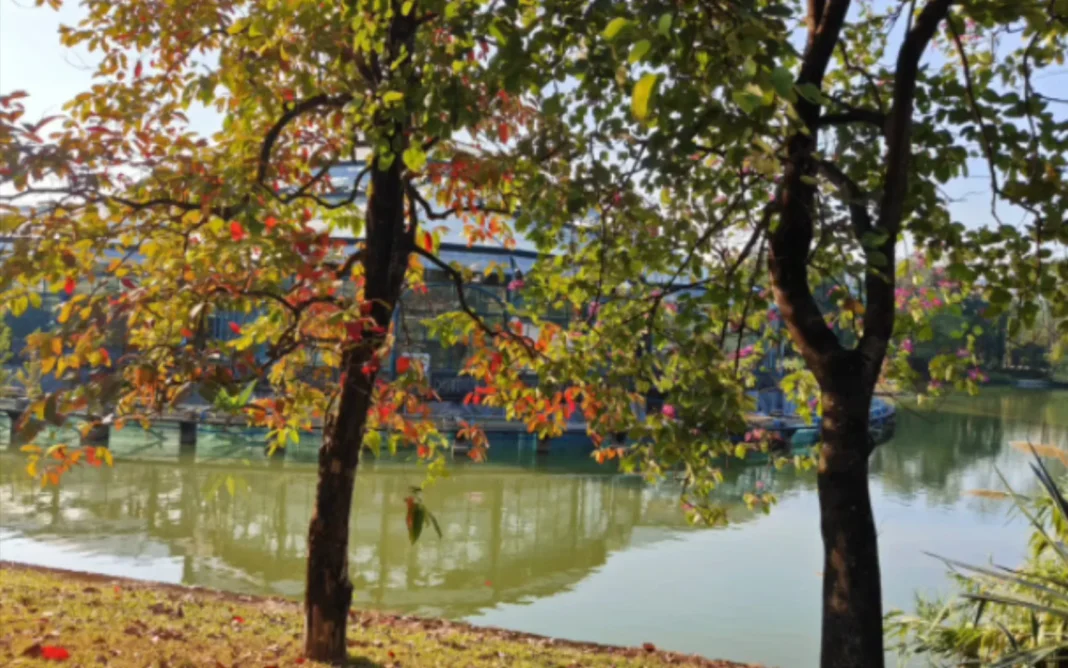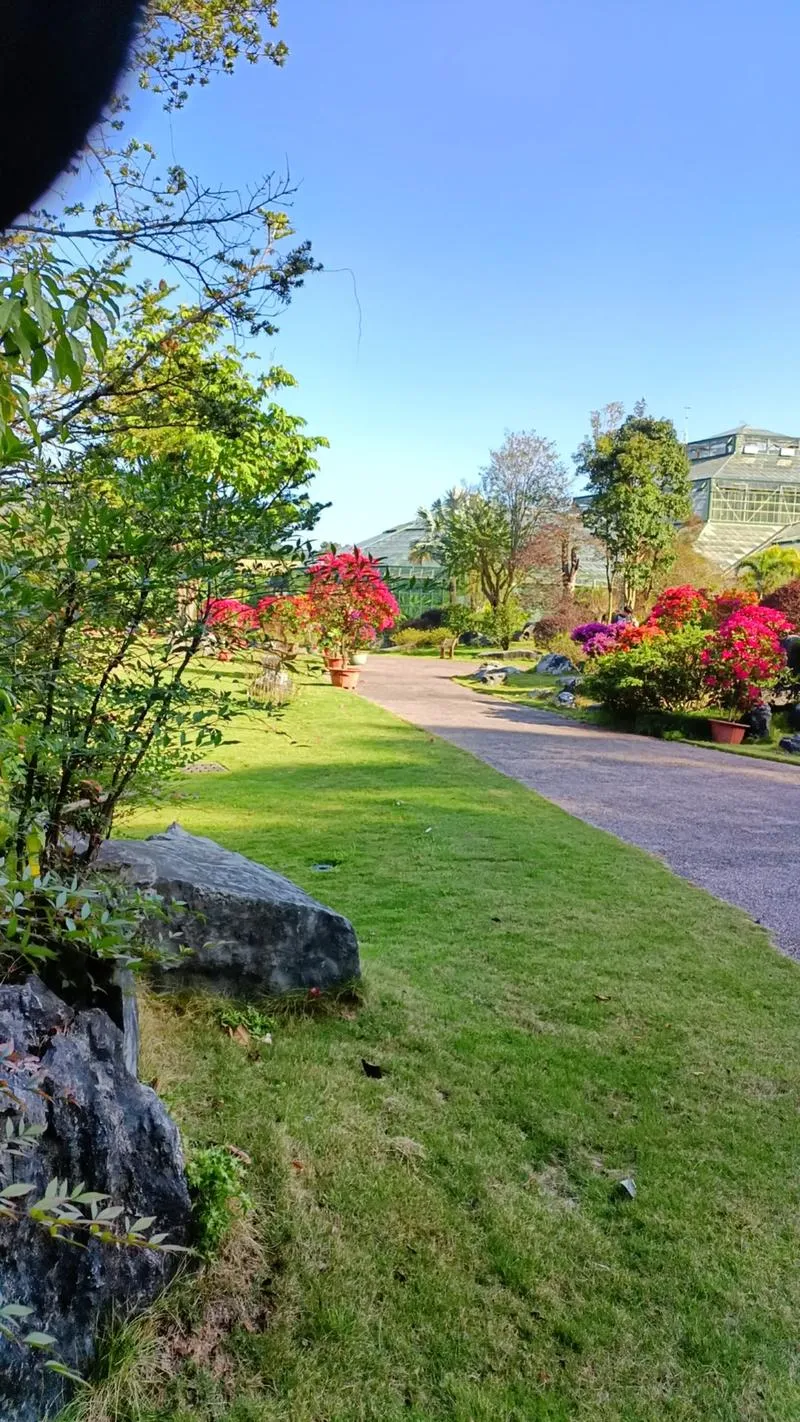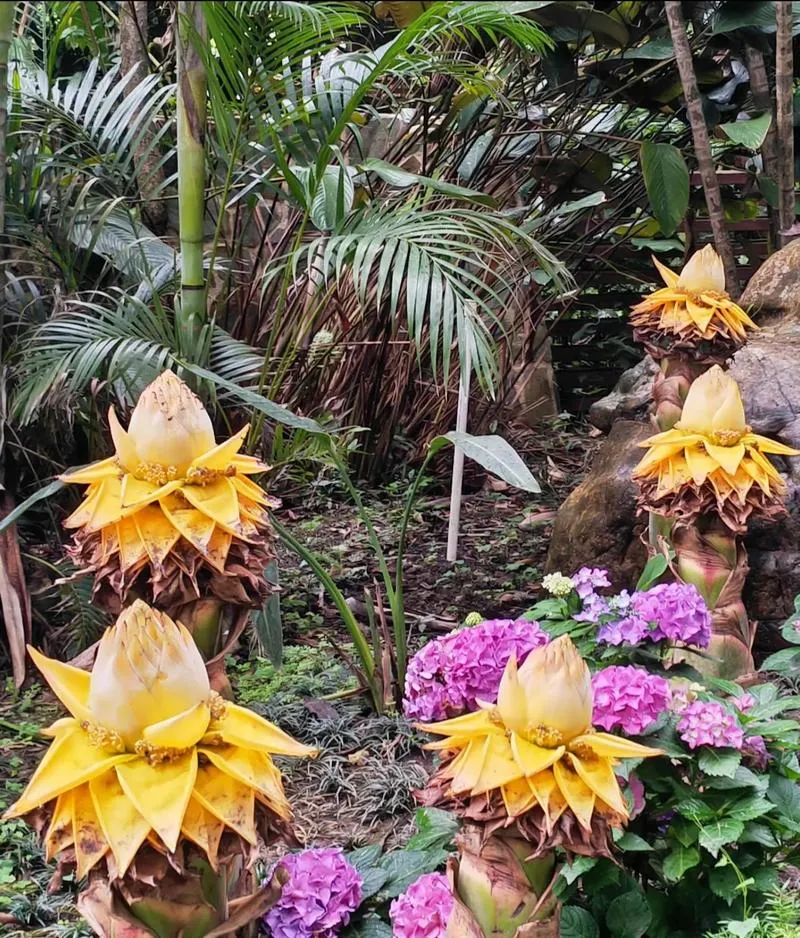The South China Botanical Garden (SCBG), nestled in the heart of Guangzhou, China, is a sprawling sanctuary of botanical wonders. Renowned as one of the largest and most comprehensive gardens in Asia, it serves as a vital center for plant research, conservation, and education. A visit to the South China Botanical Garden promises an immersive experience in the world of flora, showcasing the diversity and beauty of plant life from across the globe.
A Haven of Biodiversity in Guangzhou’s Botanical Garden
The South China Botanical Garden boasts an impressive collection of over 14,000 plant species, representing various ecosystems and geographical regions. From towering trees and vibrant flowers to bizarre orchids and medicinal herbs, the garden offers a captivating glimpse into the richness of the plant kingdom. The meticulously curated landscapes provide a serene backdrop for leisurely strolls and moments of quiet contemplation.
Key Attractions at the South China Botanical Garden
- The Arboretum: Home to a diverse array of trees, including rare and endangered species.
- The Orchid Garden: A showcase of exquisite orchids, renowned for their delicate beauty and intricate forms.
- The Medicinal Plant Garden: A collection of plants with traditional medicinal uses, offering insights into the healing power of nature.
- The Conservatory: A controlled environment for tropical and subtropical plants, providing a glimpse into bizarre ecosystems.
- The Bonsai Garden: A display of miniature trees, meticulously shaped and cultivated through the art of bonsai.
- The Rock Garden: A landscape of natural and sculpted rocks, adorned with drought-tolerant plants, creating a unique and captivating setting.
A Journey Through Time at South China’s Green Gem
The South China Botanical Garden is not only a celebration of the present but also a journey through the past. The garden’s Paleobotanical Garden offers a fascinating glimpse into the evolution of plant life, showcasing fossilized remains of ancient flora. This unique exhibit provides a window into the Earth’s prehistoric past, revealing the remarkable transformations that have shaped the plant kingdom over millions of years.
Beyond the Gardens: SCBG’s Impact
The South China Botanical Garden extends its influence far beyond its physical boundaries. The garden’s research and conservation efforts play a crucial role in protecting endangered plant species and preserving biodiversity. The garden also serves as a valuable educational resource, offering programs and workshops for students and the general public.
Unveiling the Wonders: Exploring Guangzhou’s Botanical Gardens
Embark on a journey of discovery as we delve deeper into the captivating world of the South China Botanical Garden. From its diverse plant collections to its serene landscapes, the garden offers a wealth of experiences for nature enthusiasts and curious minds alike.
The Arboretum: A Symphony of Trees at the South China Botanical Garden
The Arboretum, a cornerstone of the South China Botanical Garden, is a testament to the majesty and diversity of trees. Wander through its shaded pathways and encounter a symphony of textures, colors, and forms. Towering giants, ancient specimens, and rare species coexist in this arboreal wonderland. The Arboretum is a haven for tree lovers, offering a chance to appreciate the intricate beauty and ecological significance of these remarkable plants.
Highlighting the Arboretum’s Plant Diversity
- The Metasequoia: A “living fossil” tree, once thought to be extinct, rediscovered in China in the 1940s.
- The Ginkgo: Another “living fossil,” with a lineage dating back over 200 million years.
- The Dawn Redwood: A deciduous conifer, native to China, with feathery foliage that turns a vibrant golden hue in autumn.
- The Camphor Tree: A majestic evergreen, revered for its aromatic wood and medicinal properties.
- The Banyan Tree: A sprawling fig tree, with aerial roots that create a network of interconnected trunks, forming a natural canopy.
The Arboretum also features themed collections, such as the Palm Garden, the Bamboo Garden, and the Magnolia Garden, each showcasing the unique characteristics and cultural significance of these plant groups.
The Orchid Garden: A Fragrant Tapestry in Guangzhou
Step into the Orchid Garden and be enchanted by a fragrant tapestry of delicate blooms. This specialized collection houses a dazzling array of orchids, renowned for their intricate beauty and diverse forms. From the flamboyant Cattleya to the ethereal Phalaenopsis, the Orchid Garden is a feast for the senses.
Orchids: Jewels of the Plant Kingdom at the SCBG
Orchids, often referred to as the “jewels of the plant kingdom,” have captivated humans for centuries. Their exquisite flowers, with their intricate patterns and vibrant colors, have inspired countless artists, poets, and botanists. The Orchid Garden offers a unique opportunity to appreciate the diversity and evolutionary adaptations of these remarkable plants.
Orchid Conservation at the South China Botanical Garden
Many orchid species are threatened or endangered due to habitat loss, over-collection, and climate change. The South China Botanical Garden plays a vital role in orchid conservation, conducting research, propagation, and reintroduction programs to protect these precious plants.
The Medicinal Plant Garden: Nature’s Pharmacy in Guangzhou
The Medicinal Plant Garden is a living testament to the healing power of nature. This specialized collection showcases a variety of plants with traditional medicinal uses, offering insights into the rich history of herbal remedies. From the humble ginger to the potent ginseng, the Medicinal Plant Garden provides a glimpse into the intricate relationship between humans and plants.
Traditional Chinese Medicine: A Holistic Approach at the SCBG
Traditional Chinese Medicine (TCM) is a holistic system of healing that has been practiced for thousands of years. TCM utilizes a wide range of plant-based remedies, often in combination with other modalities such as acupuncture and massage. The Medicinal Plant Garden serves as a valuable resource for TCM practitioners and researchers, providing access to a diverse array of medicinal plants.
Modern Research: Validating Ancient Wisdom on Medicinal Plants
Modern scientific research is increasingly validating the efficacy of many traditional plant-based remedies. The South China Botanical Garden is at the forefront of this research, conducting studies to identify and isolate the active compounds in medicinal plants. This research has the potential to lead to the development of new drugs and treatments for a variety of ailments.
The Conservatory: A Tropical Paradise at the Guangzhou Botanical Garden
Escape the hustle and bustle of Guangzhou and step into a tropical paradise within the Conservatory. This controlled environment houses a diverse collection of plants from tropical and subtropical regions, creating a lush and vibrant atmosphere. From towering palms and alluring ferns to colorful bromeliads and fragrant orchids, the Conservatory offers a sensory feast.
The Conservatory’s Microclimates: A Tropical Experience
The Conservatory is designed to replicate the diverse microclimates of tropical and subtropical ecosystems. Different zones within the Conservatory maintain specific temperature, humidity, and light levels to cater to the needs of various plant species. This allows visitors to experience the unique characteristics of different tropical and subtropical environments, all under one roof.
Conservation in Action at the South China Botanical Garden
The Conservatory also plays a crucial role in the conservation of endangered tropical and subtropical plants. Many of these species are threatened by habitat loss, climate change, and over-exploitation. The Conservatory provides a safe haven for these plants, allowing them to thrive and reproduce in a controlled environment.
The Bonsai Garden: Miniature Masterpieces in Guangzhou
The Bonsai Garden is a testament to the artistry and patience of bonsai cultivation. This specialized collection showcases miniature trees, meticulously shaped and trained over many years. From gnarled junipers to graceful maples, the Bonsai Garden offers a glimpse into the world of miniature landscapes.
The Art of Bonsai at the South China Botanical Garden
Bonsai is a Japanese art form that involves cultivating miniature trees in containers. The trees are carefully pruned, wired, and shaped to create aesthetically pleasing forms that evoke the essence of nature. Bonsai cultivation requires patience, skill, and a deep appreciation for the natural world.
Bonsai: A Living Meditation at the SCBG
For many enthusiasts, bonsai cultivation is more than just a hobby; it is a form of living meditation. The process of shaping and caring for a bonsai tree fosters a sense of connection with nature and encourages mindfulness. The Bonsai Garden provides a tranquil space for visitors to appreciate the beauty and serenity of these miniature masterpieces.
The Rock Garden: A Landscape of Contrasts at the Guangzhou Botanical Gardens
The Rock Garden offers a unique and captivating landscape of natural and sculpted rocks, adorned with drought-tolerant plants. This arid environment showcases the resilience and adaptability of plant life in harsh conditions. From cacti and succulents to aloes and agaves, the Rock Garden is a testament to the beauty of survival.
Xeriscaping: Sustainable Landscaping at the SCBG
The Rock Garden also serves as an example of xeriscaping, a sustainable landscaping approach that utilizes drought-tolerant plants and water-saving techniques. Xeriscaping is becoming increasingly popular in arid regions, as it reduces water consumption and promotes ecological sustainability.
The Rock Garden’s Zen Aesthetic in Guangzhou
The Rock Garden’s minimalist aesthetic evokes a sense of tranquility and contemplation. The juxtaposition of rugged rocks and delicate plants creates a visual harmony that is both calming and inspiring. The Rock Garden offers a peaceful retreat from the urban environment, inviting visitors to slow down and appreciate the simple beauty of nature.
Beyond the Gardens: Research, Conservation, and Education at the South China Botanical Garden
The South China Botanical Garden’s impact extends far beyond its physical boundaries. The garden is a dynamic hub of research, conservation, and education, contributing significantly to the understanding and preservation of plant life.
Research: Unveiling Nature’s Secrets at the Guangzhou Botanical Gardens
The South China Botanical Garden is home to a dedicated team of researchers who delve into the mysteries of the plant kingdom. Their work spans a wide range of disciplines, including taxonomy, ecology, genetics, and ethnobotany. Through their research, they strive to:
- Identify and classify new plant species: The garden’s researchers regularly conduct expeditions to remote regions in search of undiscovered plants. Their work has led to the identification of numerous new species, contributing to the ever-growing knowledge of plant biodiversity.
- Study plant adaptations and evolution at the SCBG: By examining the intricate structures and functions of plants, researchers gain insights into the evolutionary processes that have shaped the plant kingdom. This knowledge helps us understand how plants have adapted to diverse environments and challenges.
- Investigate the medicinal properties of plants: The garden’s researchers explore the potential of plants as sources of new drugs and treatments. Their work has the potential to contribute to the development of innovative therapies for a variety of ailments.
- Develop sustainable agricultural practices: The garden’s researchers are also committed to promoting sustainable agriculture. They study the interactions between plants, soil, and other organisms to develop farming practices that are both productive and environmentally friendly.
Conservation: Protecting Endangered Species at the South China Botanical Garden
The South China Botanical Garden plays a crucial role in the conservation of endangered plant species. The garden’s ex situ conservation programs involve:
- Seed banking: The garden maintains a seed bank that stores seeds of rare and endangered plants. This ensures that these species can be preserved for future generations, even if their natural habitats are lost.
- Propagation and cultivation: The garden’s horticulturists propagate and cultivate endangered plants, ensuring their survival and providing material for reintroduction programs.
- Habitat restoration in Guangzhou: The garden actively participates in habitat restoration projects, working to restore degraded ecosystems and create suitable environments for endangered plants to thrive.
- Community engagement for conservation: The garden also engages with local communities to raise awareness about the importance of plant conservation and encourage sustainable practices.
Education: Inspiring the Next Generation at the SCBG
The South China Botanical Garden is committed to inspiring the next generation of botanists, conservationists, and environmental stewards. The garden offers a variety of educational programs and workshops for students of all ages. These programs provide opportunities to:
- Learn about plant diversity at the Guangzhou Botanical Gardens: Students can explore the garden’s diverse collections and learn about the different types of plants, their adaptations, and their ecological roles.
- Participate in hands-on activities: The garden offers workshops on topics such as seed collection, plant propagation, and botanical illustration. These activities provide students with practical skills and a deeper understanding of plant science.
- Connect with nature at South China’s Green Gem: The garden provides a tranquil and inspiring setting for students to connect with the natural world and develop a sense of environmental responsibility.
Practical Tips for Visiting the South China Botanical Garden
To make the most of your visit to the South China Botanical Garden, consider these practical tips:
- Plan your visit: The garden is vast, so it’s advisable to plan your itinerary in advance. Decide which areas you want to explore and allocate sufficient time for each.
- Wear comfortable shoes: You’ll be doing a lot of walking, so wear comfortable shoes that are suitable for uneven terrain.
- Bring sunscreen and a hat: The Guangzhou sun can be intense, so protect yourself from sunburn.
- Stay hydrated: Carry a water bottle and refill it at the garden’s drinking fountains.
- Respect the plants: Do not touch or pick any plants.
- Be mindful of your surroundings: Keep noise levels down and avoid disturbing other visitors.
- Check the garden’s website: The garden’s website provides up-to-date information on opening hours, admission fees, and special events.
The South China Botanical Garden: A Must-Visit Destination
The South China Botanical Garden is a treasure trove of botanical wonders, offering a captivating experience for visitors of all ages. Whether you’re a nature enthusiast, a plant lover, or simply seeking a peaceful retreat, the garden has something to offer. Immerse yourself in the beauty and diversity of the plant kingdom, learn about the importance of conservation, and be inspired by the wonders of nature.


